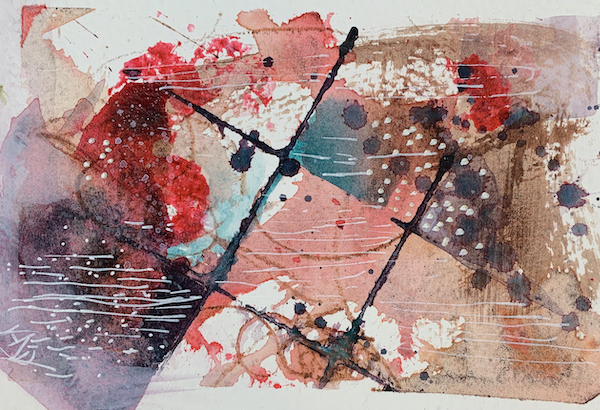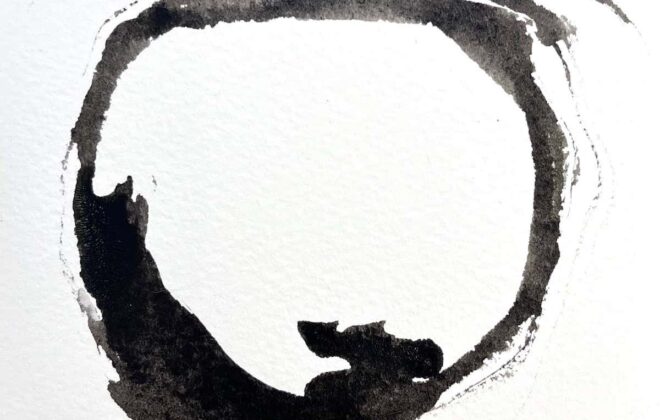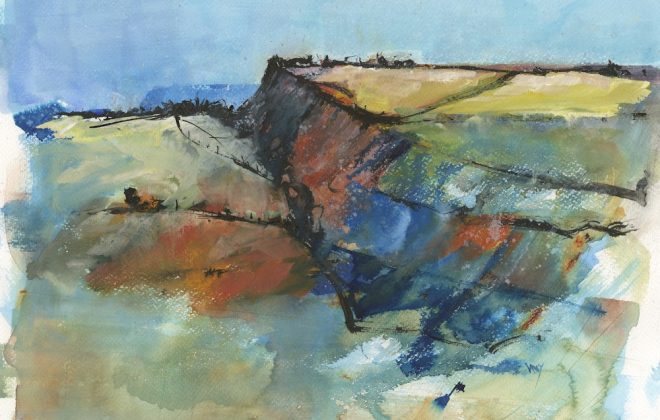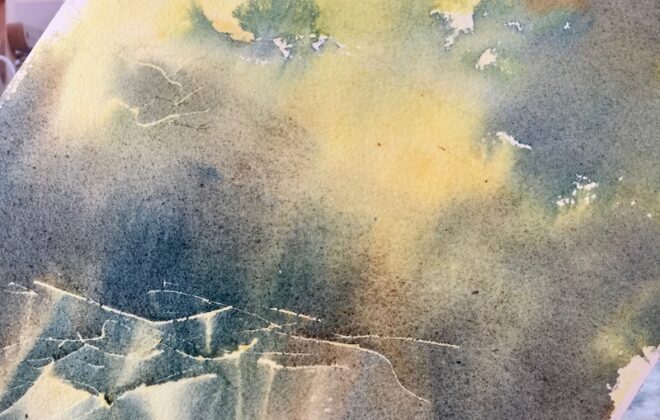Texture in watercolour – how to make your own tools
If you want to create texture in watercolour paintings, you can use granulating colours and granulation medium. You can also use watercolour ground and these days, even pearlescent watercolour ground. The development of painting mediums has given artists so many choices.
Mixed media artists have always had the option of piling thick paint onto the support and adding collage. Some artists will add things like sand or textiles to create the look they want. But for watercolour artists, the options are more limited.
Collage is increasingly being used in watercolour work. But methods that rely on creating more three-dimensional work, like laying on thick paint to create texture, are not feasible.
“Painting does what we cannot do – it brings a three-dimensional world into a two-dimensional plane.”
Chuck Jones
When I teach my Experimental Watercolour workshop I divide the course into three sections, one of which is about using tools to make interesting marks with watercolour. Using patterns and marks in watercolour can give the impression of three dimensions. It can also provide rhythm and contrast within a painting, both of which create visual interest for the viewer.
This week I’ve been painting some small postcard pieces to complete the Running With Brushes collection. Our goal of creating 1000 paintings for charity is so close. This project has given me lots of experimentation opportunities. I collect all sorts of things that I think will make unusual marks in paint. There’s a growing box of these mark-making treasures in my studio.
Texture in watercolour with zero-cost tools
As you’ll see, a lot of them are items that would have gone into our clean recycling. You can develop a repertoire of personal marks with tools that can be created at almost no cost.
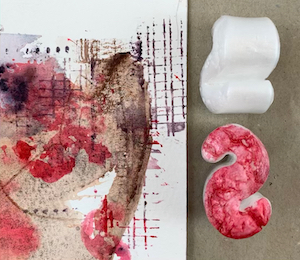
Stamp shapes
Use the polystyrene shapes from packaging to stamp shapes. This was done with the original packaging pieces but you can cut them and even join these with tape to make different texturing tools.
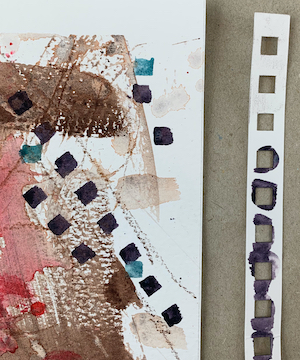
Pattern Stencil
The top of a spiral bound sketchbook sheet can be used as a stencil for regular patterns – in this case, square. Variations would be those with circular holes, or tearing the paper off so that you only get part of the shape showing on the page.
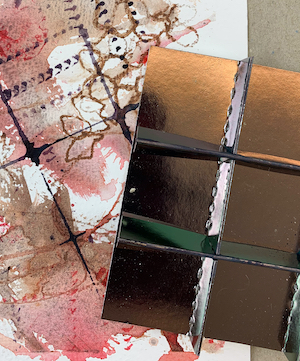
Grid shape
This one is a bit different. A small box of chocolate came with a reasonably study cardboard inner layer separator. By applying paint to the ridges and then pressing it onto the paper, I created a fairly large grid structure in my painting.
What can you find in your clean recycling to mark-making tools for your watercolours?
If you can’t find any commercially produced tools that give you the textures you want, make your own. Use cardboard and a hole punch, carve some polystyrene or use a plastic vegetable tray base to cut stencils. If you want even more variety of marks in your paintings, you might add some texturing media as well. The combination of mediums and your own tools will give you hours of experimenting and ultimately, your unique mark-making language.
Share this:
Related Posts
Leave a Reply
Recent Posts
Recent Comments
- vandy on From pulp to perfection: The art of making watercolour paper
- What Is Watercolor Paper? | Print Wiki on From pulp to perfection: The art of making watercolour paper
- Jessica on Cleaning Used Acrylic Painting Water
- vandy on What my art taught me about myself
- Terri Webster on What my art taught me about myself
Archives
- July 2025
- October 2024
- May 2024
- March 2024
- January 2024
- October 2023
- May 2023
- January 2023
- December 2022
- November 2022
- October 2022
- September 2022
- September 2021
- July 2021
- June 2021
- May 2021
- April 2021
- March 2021
- February 2021
- January 2021
- December 2020
- November 2020
- October 2020
- September 2020
- August 2020
- July 2020
- June 2020
- April 2020
- March 2020
- December 2019
- November 2019
- October 2019

